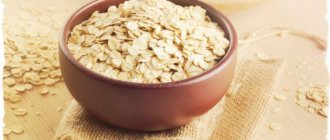What foods should be introduced at 7-8 months
Feeding a baby at 7 months
add egg yolk and increase the volume of fruit puree. At 8 months the range of products is even wider - look at the table:
| What and how much to add to complementary foods | At 7 months | At 8 months |
| Fruit puree, g | 70 | 80 |
| Yolk, pieces | ¼ (quail ½) | ½ (quail 1 piece) |
| Cottage cheese, g | 10→40 | 50 |
| Children's kefir or yogurt, biolact, ml | 0→200 | |
| Fish puree, g | 5→30 | |
| Juice, ml | 5→60 | |
| Wheat bread, crackers | ¼ – 1/6 piece of bread (5 g) | |
| Compote of fresh fruits or dried fruits, ml | 5→60 | |
| Children's tea, ml | 5→60 |
Introduce new products in the same way as before:
- The first time - no more than 1 teaspoon, yolk - ¼ piece. To a hungry child in the morning.
- Every day - a spoonful more.
- After complementary feeding, offer breast or formula.
- After 7 or 10 days you will reach the desired volume - in the table.
- After 14 days - a new type of complementary food1.
About Yolk.
I was faced with the following question: “Why does a child need a yolk?” And after googling this is what I found.
As a baby grows up, it begins to need more nutrients than breast milk can provide. The time for complementary feeding is coming, with a lot of questions associated with it. Yolk is not one of the first foods a baby is given, but closer to 6 months it is its turn.
Why is egg yolk necessary for babies?
The egg contains essential amino acids, folic acid, iodine, lecithin, iron, vitamins B2, B12, A and D.
But for all their usefulness, eggs are a fairly allergenic product, even though most of the allergens are destroyed during the cooking process. The yolk is the first to be given to the baby, since a reaction to the white occurs much more often.
At what age can you give yolk to a child?
Before the child reaches 6 months, the baby is not given yolk. This is due to the heavy load on the liver created by the egg, which consists of 23% fat.
If a child has a tendency to allergies, then the introduction of such complementary foods can be postponed until closer to eight to nine months.
protein much later, after a year , and then only if the child tolerates it normally.
Chicken or quail yolk
It is believed that quail eggs are more beneficial in their composition and less allergenic. Therefore, you can start complementary feeding with them.
But even in this case, you should not give the child too large a dose, thinking that if the egg is so small, then the amount of yolk should be large.
Allergies can also occur to quail eggs!
Quail eggs need to be cooked no less carefully than chicken eggs, since the prevailing opinion that quail eggs cannot be a source of salmonellosis is nothing more than a myth.
How to give yolk to a baby
The egg is thoroughly washed and hard-boiled , after which the yolk is separated from the white.
For the first time, the child is given literally a crumb . It is best to introduce a new product at the first feeding so that you can carefully observe how the baby’s digestive system reacts to the new product.
This dose can be added to baby purees or thoroughly ground with milk. You can also give the yolk to your baby along with porridge.
If there is no allergy, then the next day the dose is increased to 1/4 yolk .
Sometimes allergies appear on the second day, after the yolk accumulates in the body. Therefore, children are not given eggs every day; twice a week .
When your child is one year old, you can give him half a chicken yolk.
If complementary feeding begins with quail eggs, then the dose is increased, but does not exceed a whole yolk up to a year.
Author: Helen Writer specially for the blog Children's recipes
Sample menu
Child over 7 months
| 6 am | Breast milk or formula |
| 10 am | Porridge, for example, Nutrilak Premium PROCEREALS 150 g, ¼ yolk. Afterwards, supplement breastfeeding if breastfeeding |
| 2 p.m. | Breast milk or formula |
| 6 p.m. | Vegetable puree 150 g, meat puree 30 g. Afterwards, supplement with breastfeeding if breastfeeding |
| 10 pm | Breast milk or formula |
Child over 8 months
| 6 am | Breast milk or formula |
| 10 am | Porridge 180 g, ½ yolk. Fruit puree 80 g. After offering the breast, the baby is breastfeeding |
| 2 p.m. | Vegetable puree 150 g, meat puree 70 g. Afterwards, offer the breast if you have breastfeeding |
| 6 p.m. | Biolact, kefir or children's yogurt 200 ml. Cottage cheese 10-40 g |
| 10 pm | Breast milk or formula |
How to feed: when and how to give the yolk?
There are several simple rules for how to introduce an egg:
- Before introducing any new food, the child must be completely healthy. High temperature, allergic rashes, abnormal bowel movements are contraindications for the new product. Introducing yolk into complementary foods can only worsen the situation.
- How to give yolk to a child? The yolk is introduced to children after introducing them to cereals, vegetable and fruit purees. It goes well with mashed potatoes. If the baby refuses the egg in its pure form, then it is advisable to mix it with already familiar food, including breast milk. And thereby add variety to the diet. Salt is not allowed for up to a year. After introducing protein into the diet, you can prepare steamed cheesecakes and omelettes, as well as add them to soups and main courses.
- How often should I give the yolk? 2-3 times a week. Do not forget about the high calorie content of this product and the significant load on the gastrointestinal tract. If your baby has problems with bowel movements, it is better to give it no more than once a week.
- When can you give your baby an egg? It is better to offer the yolk for the first time in the morning, before the first feeding, so by the end of the day the reaction to the introduction of a new product will be clear. It is worth considering that if meat or fish is supposed to be given on this day, then the egg product must be given at least 4 hours in advance.
At what months can a baby eat yolk?
Today, when introducing complementary foods, pediatricians are guided by the recommendations and standards developed by the World Health Organization. When the baby turns 6 months old, the family doctor should advise the mother at what time to give the baby yolk, and how to do it correctly so as not to cause disruptions in the digestive system.
According to modern standards, egg yolk should be introduced into the diet from 7 months. If the child is completely breastfed and has a tendency to allergic reactions, then it is recommended to postpone introduction to this product until 8-9 months.
You should not rush into complementary feeding and introduce yolk into the menu before six months of age. But some grandmothers may insist that the baby try this product as early as 4 months, as was the case 20-30 years ago. In fact, the yolk contains 23% fat, which can further negatively affect liver function in adulthood.
What are the benefits of egg yolk for a child?
This product is a valuable source of fats and fat-soluble vitamins and must be present in the diet of children over 6 months old. But why egg yolk?
The fact is that protein is a strong allergen, so it can harm the child. At the same time, the yolk of an egg contains much more useful substances, vitamins (A, D, PP, E, group B), minerals (iodine, selenium, potassium, phosphorus, zinc, iron), and amino acids. With its regular use, it is possible to establish metabolism, improve vision and stabilize the functioning of the nervous system.
Egg yolk contains the substance lecithin, which prevents the occurrence of liver diseases, as well as carotenoids, which are responsible for visual acuity. When lecithins are broken down in the small intestine, the organic compound choline is formed, which protects cells from destruction. The absence of this element in the body leads to fat deposition in the liver, kidney damage and bleeding.
Unlike protein, yolk is very rarely allergic. Most often it manifests itself in the form of redness on the skin and digestive disorders. In this case, the product should be excluded from the child’s diet for some time.
The benefits of yolk for an infant
The chicken, developing inside the egg, first consumes the protein, and when its need for nutrients increases, it moves on to the yolk. In this regard, nature has provided that it contains all the substances necessary for the growth of a living organism, many of which are in an easily digestible form. For example, protein from chicken yolk is absorbed by 96-98%. Thus, it is a valuable food product and is required in complementary feeding for a child.
Content of nutrients in the yolk:
| Compound | Content per 100 g | Function performed in the body |
| Fats | 31 g | Less than a third of the fats in the yolk are saturated, the rest are unsaturated fatty acids omega-6 and omega-9, which are essential for the body and are responsible for the growth of nerve cells, the psychomotor development of the baby, and the absorption of vitamins. |
| Squirrels | 16 g | Formation of new tissues in the body - internal organs, muscles. Lack of protein affects the child’s mental abilities and mental development, height and weight, and resistance to infections. |
| Cholesterol | 817 mg | Synthesis in the body of vitamin D, which is responsible for the strength of bones, hormones and acids in the gall bladder. Affects intelligence - takes part in the formation of brain neurons. |
| Choline (vit. B4) | 800 mg | Improves memory, regulates insulin levels, protects liver cells. |
| Phosphorus | 542 mg | Formation of bone tissue and tooth enamel. |
| Calcium | 136 mg | Responsible for bone strength, blood clotting, muscle contraction, and hormone production. |
| Potassium | 129 mg | Maintaining water and acid-base balance in the body, working muscles, including the heart. |
| Pantothenic acid (vit. B5) | 4 mg | Participation in metabolism, antibody formation, redox processes. |
| Retinol (Vit. A) | 1.26 mg | Participates in the process of growth of new cells, maintaining immunity, fighting infections, is responsible for visual acuity in the dark and moisturizing the eyes, healthy skin, hair and nails of infants, accelerates healing, and is an antioxidant. |
Despite its rich content, it is not one of the products recommended for first complementary feeding, since the yolk should only be given from 8 months. It is quite difficult to digest and can overload the liver.
Cooking rules for babies
There is nothing special about cooking eggs for children. Prepare them step by step:
- Pour water into a saucepan, preferably from a filter.
- Immerse the eggs in it so that they are completely under water.
- Add a pinch of salt to make the shells come off easier.
- Cook over medium heat for 15 minutes.
- Drain the boiling water and add cold water.
- Leave to cool for 30 minutes.
- Peel the egg from the shell.
- Lightly cut the white and release the yolk.
Sweetish smell of rot in the mouth of a child under one year old
Next, break it on a plate and add it to the children's dish. A new product is introduced in very small portions. The yolk is very healthy, but it is an allergen and can cause an inadequate reaction in a child.
On the first day, the baby is given a few grains to try. Monitor the baby's reaction; if there are no redness, rashes, swelling or other changes, then administration can be continued. If your baby has spots, itching, or swelling of the extremities, then you need to postpone the introduction to the new product for a couple of months.
On the second day, give 1 g of yolk a try. Monitor manifestations. On the third day - 5 g of yolk, on the fourth - half. Continue to give half an yolk per day. A baby will have difficulty digesting a whole yolk, so it is better not to give him the product in large quantities.
Scheme of yolk administration for a week
| Day of the week | Quantity, g. |
| Monday | A few grains |
| Tuesday | 1 |
| Wednesday | 5 |
| Thursday | 10 |
| Friday | 15 |
| Saturday | 20 |
| Sunday | 20 |
It's better to stick to this scheme. It gives the exact values. You can use a kitchen scale to accurately measure portions. If the baby eats a couple of grams more, nothing bad will happen.
Important! It is impossible to give a large portion of the product at a time; it is better to divide it into several times.
Mother feeds the baby
Is it possible to combine
When complementary foods are introduced, the first week has passed after introducing the yolk, then you can add a little of it to any dishes. You can cook:
- Soup with egg. Prepare any soup that the baby likes, add a little egg to it.
- Chop in yolk batter. Pieces of meat or chicken are cut. Separate the yolk and white. Whip the yellow part with a whisk. The meat is dipped in batter and rolled in flour. Fry in a small amount of vegetable oil. You can cut it into small pieces for your child.
- Meat puree with yolk mass. If your baby loves canned meat, you can add a little yolk to it.
- Vegetable puree is mixed with crushed yolk. Mix well to avoid large lumps.
Doctors see nothing wrong with combining eggs and other foods. If the baby likes the product, then why not mix it with other favorite dishes?
Important! It is better not to give pure yolk in large quantities to the baby, so as not to create problems with digestion.
Allergy to yolk
The yolk of an egg is less allergenic than the white. However, it can also cause a negative reaction. It usually appears the next morning. In rare cases, allergy symptoms may accumulate and the first signs may take a few days to appear.
Previously it was believed that the yolk of a quail egg was hypoallergenic, but this opinion of experts turned out to be erroneous. Reactions to them are no less common.
Allergies manifest themselves as follows:
- redness of the cheeks and buttocks;
- rash and itching on the body;
- pain in the abdomen, so the child cries and is nervous.
There may be one or more allergy symptoms. Even a slight redness of the baby’s cheeks should alert parents. In this situation, it is best to introduce the yolk after 5-6 days, while carefully monitoring the condition of the skin. If the rash and redness have resumed, then the introduction of yolk into the diet is postponed for several months, and it is best to do this after a year.
Useful elements and substances
In addition to iron, there are a number of substances important for the human body:
- Choline. This is a B vitamin that promotes cell preservation, protects against apoptosis and regulates metabolism. Helps to properly form the nervous system, affects thinking and memory.
- Lecithin is a transporter of vitamins, minerals and medicinal substances. Forms proper functioning of the brain.
- Niacin improves cardiac function and blood circulation in the bloodstream. Also helps lipids be converted into energy.
- Retinol is one of the strongest low-molecular antioxidants. Helps form bone tissue and improves hair growth. Strengthens the immune system.
- Vitamin K regulates blood clotting properties.
- B vitamins help restore vision and synthesize hemoglobin. Significantly improve skin color, increase regeneration and improve the performance of the nervous system.
- Tocopherol is a beauty vitamin that enhances skin regeneration and improves blood quality.
- In addition to vitamins, the yolk contains a large number of macro- and microelements: iodine, iron, phosphorus, potassium.
If you were unable to introduce the yolk into your diet the first time, be sure to try it later.
Which eggs are best for complementary feeding?
It is believed that quail eggs have a more beneficial qualitative composition compared to chicken eggs and are less likely to cause allergic reactions in a child. This yolk contains more essential amino acids. Otherwise, both chicken and quail eggs are equally useful. They contain equally high amounts of fat, so they should be introduced into the diet with caution.
The important point is that you should give your child yolk, like any other product, in small doses. Exceeding them can have unpleasant consequences for the baby.
Useful properties of yolk
Egg white is a strong allergen for infants, while the benefits of the yolk have been repeatedly proven. This can be explained by the fact that it contains many useful minerals and trace elements, such as:
- groups of vitamins A, B and D;
- folic acid, iodine and phosphorus;
- potassium, zinc, iron, manganese;
- biotin and carotene;
- amino acids.
Moreover, to enrich the body of a small child with these substances, a small portion of egg yolk is enough. It also helps the proper development of the baby’s nervous system, vision formation, and normalizes the functioning of the thyroid gland.











